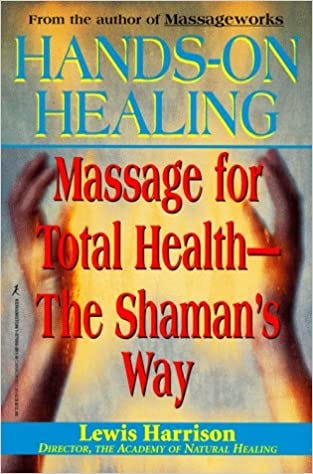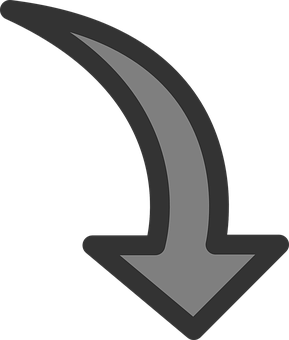5 Best Tips - Exercise To Reduce Panic Attacks
Newsletter #5 in the Wellness Wednesday Series
—————————————————
“This subscription newsletter serves a demographic of highly intelligent readers, deep thinkers, wellness proponents, life hackers, preppers, health professionals, natural healers, and entrepreneurs. These are individuals who have a passion for ideas, critical thinking, self-awareness, the arts, personal development, and a desire to understand the world around them.
Readers of my posts are usually tired of being patronized elsewhere by fact-less, opinionated know-nothings, misinformation, and health trend driven fake wellness news.
—————————————————
“Physical, mental, emotional, and spiritual health is your greatest wealth
—————————————————
This newsletter is a reader-supported publication. To receive new posts, and bonuses, and to become part of my Inner Circle please become a paid subscriber. (Sign up at the end of this newsletter)
—————————————————
On a personal note: Please excuse grammatical errors, typos, repetition, and any general nonsense, and such in this post. I am getting a bit older now, and I have about 20,000 pages of information that must get published before I leave the mortal coil. I simply write and publish more than my humble editors are able to correct. If you find enough errors you are welcome to contact me about being an editor of my work.
Thanks for sharing this newsletter with your friends and associates.
—————————————————
A 5-minute read
I was motivated to write today’s newsletter about paic attack ad anxiety after coming across an article about how a young man, TikTok Star Cooper Noriega died.
The 19-year-old died six months ago in a parking lot near Los Angeles.
The Los Angeles County Medical Examiner-Coroner reportedly determined that Noriega, 19, died due to the combined effects of the drugs fentanyl, lorazepam and alprazolam. The latter two are sedatives commonly known under the brand names Ativan and Xanax; they can be prescribed to treat anxiety and other conditions. The coroner said Noriega’s recent use of clonazepam, another anxiety medication, also contributed to his death.
I often meet people in my seminars who have been prescribed medication for anxiety and panic attacks and most of them time these prescriptions are just not necessary? There are so many solutions including yoga, tai chi, and meditation.
If you Google “Panic Attacks Meaning” these are the most common question that will be asked…
What are 4 signs of a panic attack?
What are 3 types of panic attacks?
What are 5 symptoms of a panic attack?
What usually triggers panic attacks?
The one question that needs to be asked isn’t here.
What are the best fitness tips for treating anxiety symptoms?
To deal with anxiety you need to transcend fear.
Fear is a natural, powerful, and primitive human emotion. It involves a universal biochemical response as well as a high individual emotional response. Fear alerts us to the presence of danger or the threat of harm, whether that danger is physical or psychological. Often fear is tied to Panic and anxiety disorders, which are a group of mental/emotional conditions characterized by significant feelings of fear and anxiety.
I have always found as a transformative Coach and speaker that if I am overcome by fear before an important speech that taking a long brisk walk or even do yoga or tai chi can really reduce those uncomfortable feelings.
Scientists have found that regular participation in aerobic exercise has been shown to decrease overall levels of tension, elevate and stabilize mood, improve sleep, and improve self-esteem. About five minutes of aerobic exercise can begin to stimulate anti-anxiety effects. Some researchers believe possible changes in EEG frontal asymmetry could contribute to understanding the relationship between exercise, brain, and anxiety.
There are several different anxiety disorders, including generalized anxiety disorder, specific phobias, and others. Anxiety is usually a worry about future events, while fear is a reaction to current events. These feelings may cause physical symptoms, such as increased heart rate and shakiness. Panic Attacks are closely connected but there are subtle distinctions between the two that will not be addressed in this post.
Exercise especially aerobics can have a powerful effect on these symptoms, including;
· Feeling nervous, restless, or tense.
· Feeling weak or tired.
· Having a sense of impending danger, panic, or doom.
· Trembling.
· Having an increased heart rate.
· Breathing rapidly (hyperventilation)
· Sweating.
· Trouble concentrating or thinking about anything other than the present worry.
The various disorders differ by what results in the symptoms. It is possible for an individual to have more than one anxiety disorder.
The cause of anxiety disorders is thought to be a combination of genetic and environmental factors. Risk factors include a history of child abuse, family history of mental disorders, and poverty.
Panic attacks may also occur due to short-term stressors. Significant personal loss, including an emotional attachment to a romantic partner, life transitions, and significant life changes may all trigger a panic attack to occur.
To be diagnosed, symptoms typically need to be present for at least 6 months, be more severe than the symptoms that would normally be expected for certain situations, and decrease a person’s ability to function in their daily life. Anxiety disorders differ from normal anxiety or fear by being excessive or persisting.
“When you get stronger everything in the world gets easier. Change yourself and you’ve changed everything.”
― Hunter Post
A person with an anxious temperament, excessive need for reassurance, overcautious view of the world, hypochondriacal fears, and cumulative stress have been correlated with panic attacks. In adolescents, social transitions may also be a cause.
Walking and breathing properly can reduce panic attacks
—————————————————
I recently wrote an article about the healing power of walks - https://asklewis.substack.com/p/the-best-art-and-science-of-the-walking
—————————————————
People will often experience panic attacks as a direct result of exposure to an object/situation that they have a phobia for.
Panic attacks may also become situationally-bound when certain situations are associated with panic due to previously experiencing an attack in that particular situation. People may also have a cognitive or behavioral predisposition to having panic attacks in certain situations.
A Treatment Solution
Without treatment, anxiety disorders tend to remain. Treatment may include lifestyle changes, counseling, and medications.
Among the fitness-based treatments for the condition are:
Tai Chi and yoga,
Specialized breathing exercises,
Aerobics,
High repetition, low weight strength training,
Cognitive Behavioral Therapy,
5 exercise tips to help ease anxiety?
Engaging in exercise redirects your mind from the very thing you were panicking about.
Regular exercise builds up resources that bolster resilience against stormy emotions.
Increasing your heart rate changes brain chemistry, increasing the availability of important anti-anxiety neurochemicals, including brain-derived neurotrophic factor (BDNF), serotonin, and gamma-aminobutyric acid (GABA).
Active movement reduces muscle tension, lowering the body’s sense of anxiety.
Exercise activates the frontal regions of the brain responsible for executive function, which helps control the amygdala, our reacting system to real or imagined threats to our survival.
Why does exercise work to reduce anxiety?
While pinpointing these reasons is not easy, recent research indicates that people who suffer from panic attacks and general anxiety disorders reported that high-level physical activity helped them to better protect themselves against developing anxiety symptoms than those who reported low physical activity.
When it comes to treating anxiety, more exercise is better.
If you’re a newbie have no worry. Even one session of exercise can help ease anxiety if it begins to arise.
Any exercise is fine. Yoga, Tai Chi, strength building, aerobics, etc. People experienced improvement no matter which types of activity they tried. Any general physical activity can be helpful. The key is consistency.
To maximize the benefits:
Choose something enjoyable so you will do it repeatedly, building resilience.
Work toward getting your heart rate up.
Work out with a friend or in a group to reap the added benefit of social support.
If possible, exercise in nature or in a green space, which will further reduce stress and anxiety. This is called the Biophilia Effect.
Takeaway
You don’t need to be a physician or a world-class athlete to know how good you feel after a good work-out. Those feelings can serve as a motivation to get moving every day and decrease your anxiety attacks.
——————————————————————————
Author: Hey there. My name is Lewis Harrison, and I created this newsletter. I am a transformational life coach, teacher, and prepper. I am a proponent of entrepreneurism and also a writer and seminar leader. The author of over twenty books, and numerous self-improvement, business success, and personal development courses, I am the former host of a talk show on NPR Affiliated WIOX91.3 FM.
I am also the author of the book Hands-on Healing: Massage the Shaman’s Way







